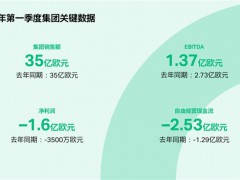據(jù)今日油價(jià)7月21日?qǐng)?bào)道,因市場擔(dān)心歐佩克產(chǎn)油國會(huì)增加供應(yīng),加上對(duì)新冠肺炎變異毒株的擔(dān)憂情緒增加,以及燃料庫存數(shù)據(jù)不佳,油價(jià)在過去兩周一直下滑。周二早間,西德克薩斯中質(zhì)原油的交易價(jià)格為每桶65.99美元,布倫特原油的交易價(jià)格為每桶68.24美元,這是兩個(gè)月前的水平。
這標(biāo)志著油價(jià)在幾周前觸及多年高點(diǎn)后,出現(xiàn)了急劇的趨勢逆轉(zhuǎn),這自然會(huì)引發(fā)這樣一個(gè)問題:油價(jià)漲勢是否走得太遠(yuǎn)、太快了?
看漲石油的人會(huì)很高興聽到油價(jià)與黃金相比仍有上行空間。要知道,石油和黃金是世界上最受關(guān)注的兩種大宗商品,兩者的走勢經(jīng)常跟隨也就不足為奇了。
摩根士丹利(Morgan Stanley)的Martijn Rats和Amy Sergeant在最近的一份研究報(bào)告中表示,盡管從歷史上看,石油與黃金的價(jià)格比例并不能很好地反映未來油價(jià)的走勢,但對(duì)于尋求石油價(jià)格走勢指引的投資者來說,這一比例仍有可能引起他們的興趣。
那么,當(dāng)前這個(gè)趨勢如何呢?
看看一盎司黃金在任一時(shí)間點(diǎn)可以購買多少桶石油,也就是每盎司黃金可以購買多少桶石油。
分析得出,自1946年以來,黃金與石油的平均比例一直是1盎司黃金可以購買16.53桶石油。任何時(shí)候,一盎司黃金可以購買超過16.53桶石油,這意味著要么石油便宜,要么黃金昂貴。相反,只要一盎司黃金的購買量低于16.53桶,石油就被認(rèn)為是昂貴的,黃金就被認(rèn)為是廉價(jià)的。了解這一點(diǎn)可以幫助投資者決定,是應(yīng)該買進(jìn)更多石油,賣出黃金,還是采取相反的做法。
以最近的時(shí)間框架來看,1998年,石油價(jià)格便宜,而黃金相對(duì)昂貴。1999 -2000年,油價(jià)上漲了66%,而黃金基本持平。21世紀(jì)初,金價(jià)再次相對(duì)石油來說變得非常便宜,從2001年的271美元漲至2012年的1669美元,當(dāng)時(shí)油價(jià)再次走低。值得一提的是,這只是年平均價(jià)格,意味著投資者不需要準(zhǔn)確把握時(shí)機(jī)就可以出手。
2019年,石油平均價(jià)格為每桶50.01美元,黃金平均價(jià)格為1514.75美元,這意味著一盎司黃金可以購買30桶多一點(diǎn)的石油。2020年,這一比例飆升至54.87桶/盎司的天文數(shù)字,是長期平均水平的三倍以上。今年,這一比例降至27.60桶/盎司黃金,較長期平均水平高出67%。
上一次該比率處于“正常范圍”是在2014年油價(jià)暴跌期間。原油價(jià)格在2014年6月20日達(dá)到107.95美元/桶的峰值后,在2015年1月28日短短7個(gè)月的時(shí)間里暴跌至44.08美元/桶。
因此,可以說,盡管2014年的油價(jià)暴跌很糟糕,但它只是代表了對(duì)均值的回歸,而2020年的拋售則有些過于嚴(yán)重了。
黃金前景仍不明朗,不斷上升的通脹數(shù)據(jù)支撐了金價(jià)的漲勢,但越來越強(qiáng)硬的美聯(lián)儲(chǔ)表示要阻止這場“盛宴”。假設(shè)黃金價(jià)格穩(wěn)定在每盎司1821美元,油價(jià)需要攀升到110美元/桶,黃金-石油比率才會(huì)回到歷史中值。突然之間,美國銀行(Bank of America)最近關(guān)于油價(jià)可能在2022年達(dá)到每桶100美元的預(yù)測似乎不再那么牽強(qiáng)了。
油價(jià)與通貨膨脹的關(guān)系
此外,石油市場仍需爬上另一道令人擔(dān)憂的大墻,投資者面臨另一個(gè)潛在的敵人:通脹加劇。
美國最近試圖安撫人們的擔(dān)憂,即不斷上升的通脹可能會(huì)損害美國的經(jīng)濟(jì)復(fù)蘇,并破壞他的4萬億美元支出計(jì)劃。在此之前,隨著經(jīng)濟(jì)在因新冠肺炎而實(shí)行的相關(guān)封鎖之后繼續(xù)復(fù)蘇,美國6月份的通貨膨脹加速,達(dá)到2008年以來的最快增速。
根據(jù)美國勞工部的數(shù)據(jù),6月份消費(fèi)者價(jià)格指數(shù)(CPI)同比上漲5.4%,而不包括食品和能源的核心價(jià)格指數(shù)同比上漲4.5%。不斷上升的通脹,是由于對(duì)商品和服務(wù)的需求超出了企業(yè)的能力,無法跟上制約半導(dǎo)體和太陽能等多種行業(yè)的供應(yīng)瓶頸,巨額刺激資金以及美國個(gè)人儲(chǔ)蓄率的飆升。
共和黨人已經(jīng)抓住令人擔(dān)憂的通脹趨勢,反對(duì)拜登雄心勃勃的支出計(jì)劃,稱美國無力承擔(dān)可能提振經(jīng)濟(jì)的額外政府支出提案。
政府可能會(huì)對(duì)高企的石油和汽油價(jià)格感到不安,這不僅是因?yàn)槭驮跉v史上在決定通脹趨勢中所扮演的角色,還因?yàn)樗鼈儗?duì)拜登未來的政治抱負(fù)構(gòu)成了風(fēng)險(xiǎn)。
油價(jià)和通貨膨脹是有因果關(guān)系的。隨著油價(jià)的攀升,通貨膨脹也會(huì)隨之上升。另一方面,通脹往往會(huì)隨著油價(jià)下跌而下降。之所以會(huì)出現(xiàn)這種情況,是因?yàn)槭褪墙?jīng)濟(jì)中的一項(xiàng)主要投入,如果投入成本上升,最終產(chǎn)品的成本也會(huì)上升。
值得慶幸的是,自上世紀(jì)80年代以來,油價(jià)與通脹之間的聯(lián)系已明顯減弱。
例如,在上世紀(jì)90年代和海灣戰(zhàn)爭石油危機(jī)期間,盡管原油價(jià)格在6個(gè)月內(nèi)翻了一番,從每桶14美元漲到了30美元左右,但通脹保持穩(wěn)定。這兩個(gè)指標(biāo)之間的脫鉤在1999年至2005年油價(jià)上漲期間變得更加明顯,油價(jià)年平均名義價(jià)格從每桶16.50美元上漲至每桶50美元,而CPI從1999年1月的164.30美元上漲至2005年12月的196.80美元。
不過,政府可能會(huì)開始擔(dān)心高油價(jià),因?yàn)楸娝苤蛢r(jià)格會(huì)對(duì)消費(fèi)者心理產(chǎn)生巨大影響。目前美國汽油價(jià)格為每加侖3.16美元。雖然這只比過去10年的平均價(jià)格高20美分,但比去年的價(jià)格高了整整1美元。
原油和汽油之間的價(jià)格相關(guān)性多年來已經(jīng)發(fā)生了很大的變化,而且對(duì)消費(fèi)者不利。大多數(shù)州都提高了汽油稅,煉油廠面臨著增加成本的新規(guī)定,而且向加油站運(yùn)送汽油的卡車司機(jī)短缺。
這會(huì)造成什么結(jié)果呢?
GasBuddy的石油分析師帕特里克?德?漢(Patrick De Haan)表示:“今天油價(jià)達(dá)到每桶100美元可能會(huì)讓我們接近每加侖4美元的關(guān)口。”
對(duì)于司機(jī)來說,4美元的門檻無疑是一個(gè)痛點(diǎn),4.17美元是2008年夏天油價(jià)達(dá)到145美元/桶之后的最高油價(jià)。
王佳晶 摘譯自 今日油價(jià)
原文如下:
Gold Prices Show That Oil Is Still Cheap
Oil prices have tanked over the past two weeks, suffering from fears of additional OPEC supply hitting the market, the shattering of demand optimism over Delta variant fears, and unfavorable fuel inventory data. WTI was trading at $65.99/bbl early Tuesday, with Brent at $68.24, levels they crossed two months ago.
That marks a sharp trend reversal after taking out multi-year highs just weeks ago, which naturally begs the question of whether the oil price run-up had run too far, too fast.
The oil bulls will be happy to hear that oil prices still have upside when measured against gold.
Oil and gold are two of the world's most-watched commodities, and it's hardly surprising that where one goes the other frequently follows.
In a recent research note, Morgan Stanley's Martijn Rats and Amy Sergeant have said that although the oil-gold ratio has historically been a poor indicator of future oil prices, it can still be of interest to investors seeking guidance on the direction of oil prices.
So, how's that trending?
We can go back and see the number of barrels of oil a single ounce of gold could buy at any point in time i.e., barrels per ounce.
Looking at the chart above, the average Gold-Oil ratio since 1946 has been that one ounce of gold would buy 16.53 barrels of oil. Any time an ounce of gold would buy more than 16.53 barrels of oil meant that either oil was cheap or gold was expensive. Conversely, oil has been regarded as being expensive or gold cheap whenever an ounce of gold would buy less than 16.53 barrels. Knowing this can help investors determine whether they should be buying more oil and selling their gold, or vice-versa.
Looking at more recent timeframes, in 1998, oil was cheap while gold was relatively expensive. In 1999 -2000, oil climbed 66% while gold was basically flat. In the early 2000s, gold was once again relatively very cheap, and it went from $271 in 2001 to $1,669 in 2012 when oil was cheap again. Remember, these are just average annual prices, meaning an investor wouldn't need to get their timing exactly right to hit them.
In 2019, oil averaged $50.01 a barrel and gold averaged $1,514.75, meaning an ounce of gold would buy just over 30 barrels of oil. In 2020, the ratio spiked to an astronomical 54.87 barrels per ounce of gold or more than 3x the long-term average. In the current year, the ratio has dropped to 27.60 barrels per ounce of gold, 67% above the long-term average.
The last time the ratio was in the "normal range" was back in 2014 during the last oil price crash. After peaking at $107.95 a barrel on June 20, 2014, crude prices plunged to $44.08 a barrel by January 28, 2015 in the space of just 7 months.
We could, therefore, argue that as bad as the 2014 oil price crash was, it merely represented a reversion to the mean, whereas the 2020 selloff was massively overdone.
The gold outlook remains uncertain, with rising inflation numbers supporting a gold rally but an increasingly hawkish Fed threatening to stop the party.
Assuming gold prices remain stable at the current $1,821 per ounce, oil prices would need to climb to $110/bbl for the gold-oil ratio to return to its historic median.
Suddenly, Bank of America's recent prediction that oil prices could hit $100 per barrel in 2022 does not appear so far-fetched.
Oil Prices and Inflation
However, the oil markets still have to climb another major wall of worry, with investors facing another potential nemesis: Rising inflation.
President has lately sought to soothe fears that rising inflation could hurt the U.S. recovery and undermine his $4tn spending plans. This comes after U.S. inflation for the month of June accelerated to the fastest clip since 2008, as the economy continues to recover following the Covid-19 related lockdowns.
According to the Labor Department, the consumer-price index (CPI) climbed 5.4% Y/Y in the month of June while the core price index--which excludes food and energy--increased 4.5% Y/Y. Rising inflation is being driven by demand for goods and services outpacing the ability of companies to keep up with supply-side bottlenecks hampering diverse industries, including semiconductors and the solar sectors; significant stimulus funding as well as a surge in the U.S. personal savings rate.
Republicans have already seized on the alarming inflation trend to oppose Biden's ambitious spending plans saying the country can ill-afford additional government spending proposals that might juice the economy.
The administration will probably be feeling a little jittery about high oil and gasoline prices not only because of the role that oil has historically played in dictating inflation trends but also because of the risk they pose to his future political ambitions.
Oil prices and inflation are connected in a cause-and-effect relationship. As oil prices climb, inflation tends to follow in the same direction higher. On the other hand, inflation tends to fall in tandem with falling oil prices. That's the case because oil is a major input in the economy, and if input costs rise, so should the cost of end products.
Thankfully, the oil-inflation nexus has weakened considerably since the 1980s.
For instance, during the 1990s and the Gulf War oil crisis, inflation remained stable despite crude oil prices doubling in six months to around $30 from $14.This decoupling between the two metrics became even more apparent during the 1999 to 2005 oil price rally when the annual average nominal price of oil rose to $50 from $16.50 while CPI rose by a much smaller margin to 196.80 in Dec. 2005 from 164.30 in Jan. 1999.
Still, the administration could start fretting about high oil prices because it's a well-known fact that gas prices have an outsized impact on consumer psyches.
Gas prices currently sit at $3.16 per gallon nationally. While that is only about 20 cents higher than the average during the last 10 years, it's a full dollar higher than prices last year.
The price correlation between crude and gasoline has changed quite a lot over the years--in ways that do not favor the consumer. Most states have raised gas taxes, refiners face new rules that add cost, and there's a shortage of drivers for the trucks that deliver gas to filling stations.
The result?
"One-hundred-dollar oil today could get us close to the $4 per gallon mark," says petroleum analyst Patrick De Haan of GasBuddy.
The $4 threshold is regarded as an unmistakable pain point for drivers, with $4.17 being the record high for gas prices after oil prices hit $145/bbl in the summer of 2008.
免責(zé)聲明:本網(wǎng)轉(zhuǎn)載自其它媒體的文章,目的在于弘揚(yáng)石化精神,傳遞更多石化信息,并不代表本網(wǎng)贊同其觀點(diǎn)和對(duì)其真實(shí)性負(fù)責(zé),在此我們謹(jǐn)向原作者和原媒體致以敬意。如果您認(rèn)為本站文章侵犯了您的版權(quán),請(qǐng)與我們聯(lián)系,我們將第一時(shí)間刪除。







